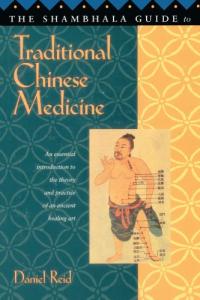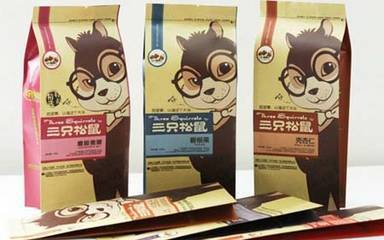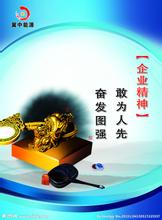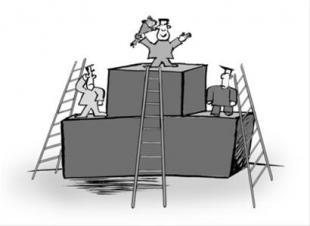Lesson1
Traditional Chinese Medicine: History and Development
Traditional Chinese Medicine (TCM), with a history of thousands of years, unique and integrated theoretical system, rich practice experience and good clinical effect, has been making great contribution to Chinese people’s health care and development of Chinese nation. It’s a summary of the Chinese people’s experience in their struggle against diseases. Over the past few decades it has been attracting increasing attention from all over the world.
The formation of TCM theoretical system can be traced back to the period of Warring States and the Qin and Han Dynasties. During the long course of TCM development, the ancient medical experts took ancient Chinese philosophical thinking as the guide, constantly absorbing knowledge from ancient natural and social science. The compilation of Huangdi Neijing ( Huangdi’s Canon of Medicine ), Nanjing (Classic of Difficulties ), Shanghan Zabing Lun (Treaties on Cold Damage and Miscellaneous Disease ), and Shennong Bencao Jing ( Shennong’s Classic of Materia Medica), known in TCM as the Four Great Classic, is the symbol of the primary formation of the theoretical system of TCM.
Huangdi Neijing, as the earliest and greatest medical classic extant in China, was completed by many medical experts in history. And so important is it considered that even at present, after thousands of years, it is still regarded as the most authoritative one in TCM. This work consists of two distinct books, i.e. Su Wen ( Plain Conversation ) and Ling Shu ( Spiritual Pivot ), each comprising nine volumes. The content of Huangdi Neijing covers the following aspects: the correspondence between man and nature, physiology and pathology of the human body as well as diagnosis, treatment and prevention of disease. By applying the theories of yin-yang and the five elements, it has developed the therapeutic principles based on syndrome differentiation, seasonal changes, geographical localities and individual constitution.
Nan Jing was written approximately before the Han Dynasty and, according to legend, by Qin Yueren, also known as Bian Que. It deals mainly with the basic theory of TCM, including the knowledge of physiology, pathology, diagnostics and therapeutics. It has supplemented what was unaddressed in Huangdi Neijing in many aspects especially in pulse lore.
Shennong Bencao Jing, the earliest book on material medica in China, appeared approximately in the Han Dynasty with its authorship unknown. In this classic, 365 kinds of medicine are recorded, among which 252 are herbs, 67 are animal parts and 46 are mineral products. They are divided into three grades according to their properties and effects. Other content concerning pharmaceutics analyzed in this classic includes four properties ( cold, hot, warm and cool ), five flavors ( sour, bitter, sweet, pungent and salty ), and seven conditions of ingredients in prescriptions ( single effect, mutual reinforcement, mutual assistance, mutual restraint, mutual inhibition, mutual antagonism and mutual suppression ).
Shanghan Zabing Lun was written by Zhang Zhongjing at the end of the Eastern Han Dynasty. In this book the rich experience on prevention and treatment of diseases before the Eastern Han Dynasty was summed up, diagnosis and treatment of cold and miscellaneous diseases were dealt with respectively. This book symbolizes the establishment of treatment based on syndrome differentiation in TCM. It was later divided into two parts: Shanghan Lun ( Treatise on Cold Damage ) and Jingui Yaolue ( Synopsis of Golden Chamber ). Based on the Four Great Classics, medical experts in different dynasties further enriched and developed the theoretical system of
TCM. Huangfu Mi in the Western Jin Dynasty compiled Zhenjiu Jiayi Jing ( A-B Classics of Acupuncture and Moxibustion ), which is the earliest extant works dealing exclusively with acupuncture and moxibustion. In 610, Cao Yuanfang compiled Zhubing Yuanhou Lun ( Treatise on Causes and Manifestations of Various Diseases ), the earliest monograph on etiology and symptomatology in China. In 657, Su Jing, together with 20 other scholars, compiled Xinxiu Ben cao ( Newly-Revised Materia Medica ), which is the first pharmacopoeia sponsored officially in China and the earliest pharmacopoeia in the world as well. Sun Simiao ( 581-682 ) devoted all his life to the writing of two great books: Beiji Qianjin Yaofang ( Valuable Prescriptions for Emergency ) and Qianjing Yifang ( Supplement to Valuable Prescriptions ). In the Song Dynasty, more attention was paid to the education of medicine. The government set up “The Imperial Medical Bureau” for training and educating qualified medical workers. In 1057, a special organization named “Bureau for Revising Medical Books” was set up in order to proofread and correct the medical books published in the previous dynasties.
In the Jin and Yuan Dynasties, there appeared four great medical schools represented by Liu Wansu ( 1120-1200 ), Zhang Congzheng (1156-1228 ), Li Gao (1180-1251 ) and Zhu Zhenheng ( 1281-1358 ). Liu Wansu believed that “fire-heat” was the main cause of a variety of diseases and these diseases should be treated with drugs cold and cool in nature. So his theory was known as the “School of Cold and Cool”. Zhang CongZheng believed that all diseases were caused by exogenous pathogenic factors and advocated that pathogenic factors should be driven out by means of diaphoresis, emesis, and purgation. For this reason his history was known as the “School of Purgation”. Li Gao held that “internal impairment of the spleen and stomach would bring about various diseases” and emphasized that the most important thing in clinical treatment was to warm and invigorate the spleen and stomach. And therefore he was regarded as the founder of the “School of Reinforcing the Earth”. Zhu Zhenheng believed that “Yang is usually excessive while yin is frequently deficient” and advocated the remedies of nourishing yin and reducing fire in treatment of disease. That is why his theory was known as the “School of nourishing Yin”.
Li Shizhen (1518-1593), a famous physician and pharmacologist in the Ming Dynasty, wrote Bencao Gangmu ( Compendium of Materia Medica ). This book consists of 52 volume in which 1,892 medicinal herbs, over 11,000 prescription and 1,100 illustrations of medicinal items are presented. It deals with the knowledge of many subjects, such as botany, zoology, mineralogy, physics, astronomy and meteorology. This book is recognized as a monumental work in the history of Chinese materia medica and a great contribution to the development of pharmacology in the world.
Owing to the wanton massacre of infectious diseases, there emerged the School of Warm Diseases in the Ming and Qing Dynasties dealing with diagnosis, prevention and treatment of warm diseases.
After the Opium War (1840-1842 ) Western medicine began to disseminate in China, exerting certain influence on the practice of TCM. Some Chinese medical experts tried to combine TCM with Western medicine. Yixue Zhongzhong Canxi Lu (Records of Traditional Chinese and Western Medicine in combination) written by Zhang Xichun is a good representative monograph in this field.

After the founding of the People’s Republic of China in 1949, great progress in theoretical study and clinical research of TCM has been made with modern scientific methods and advanced technology by doctors, researchers and other scientists.
百度搜索“爱华网”,专业资料,生活学习,尽在爱华网
 爱华网
爱华网



